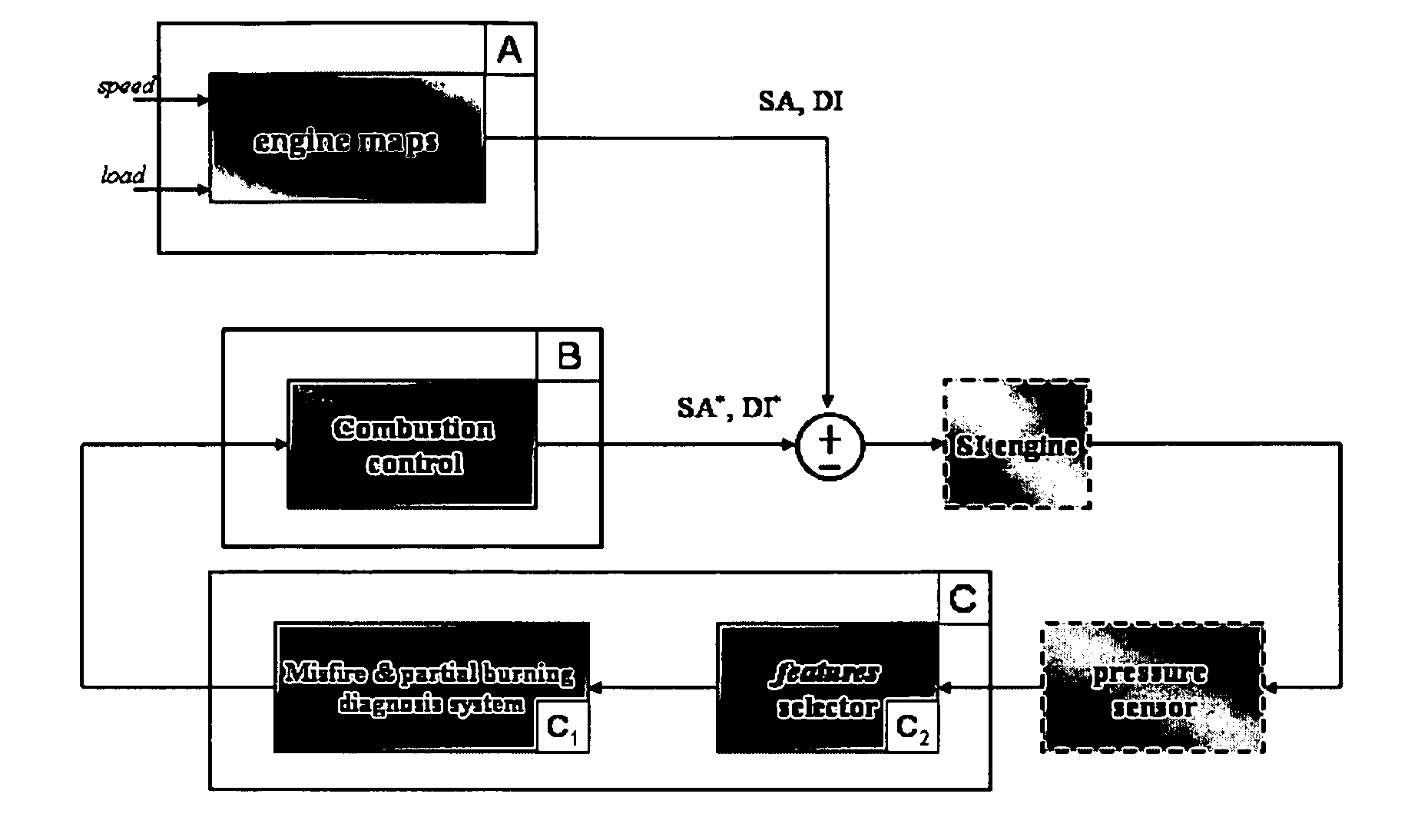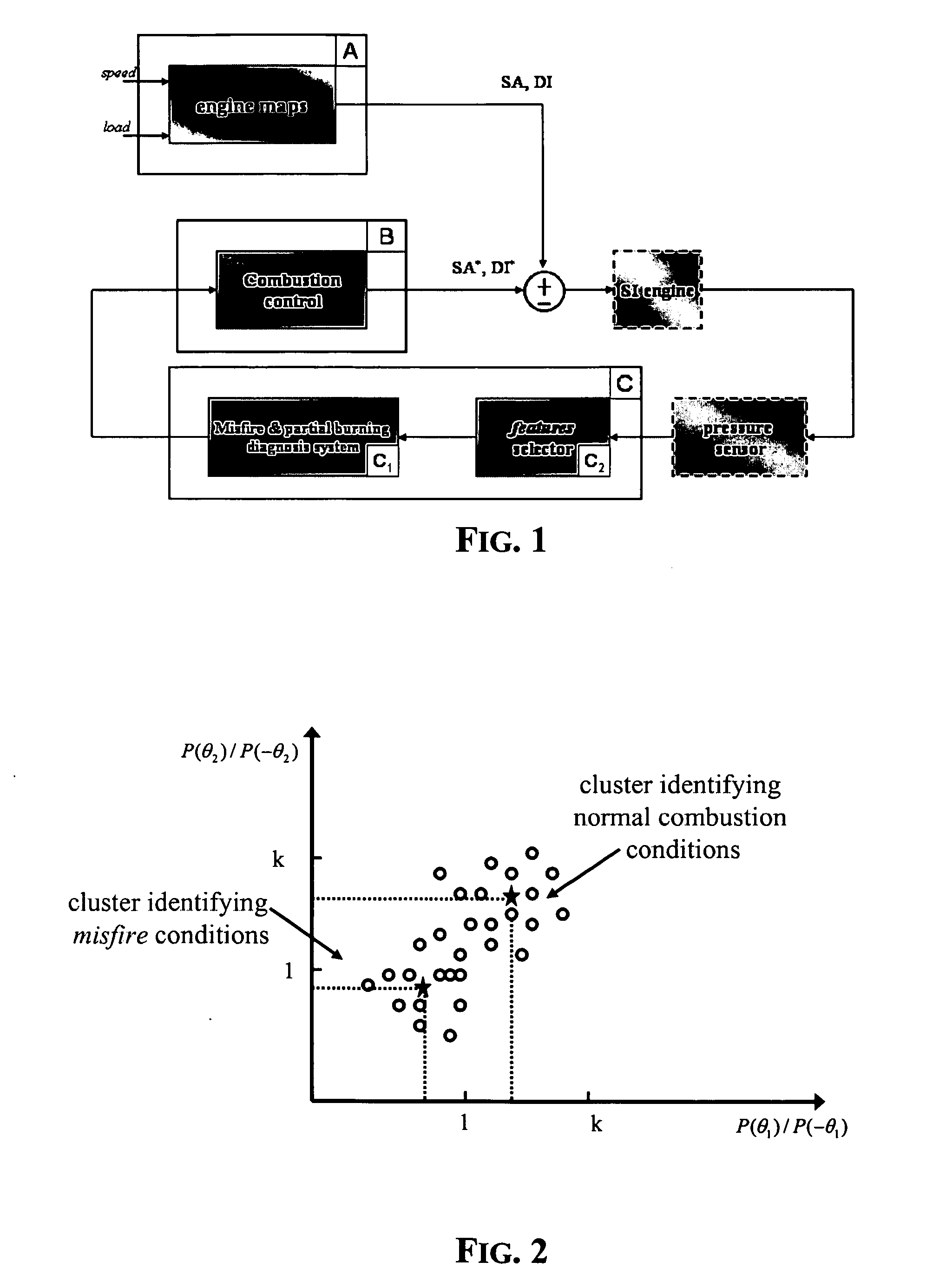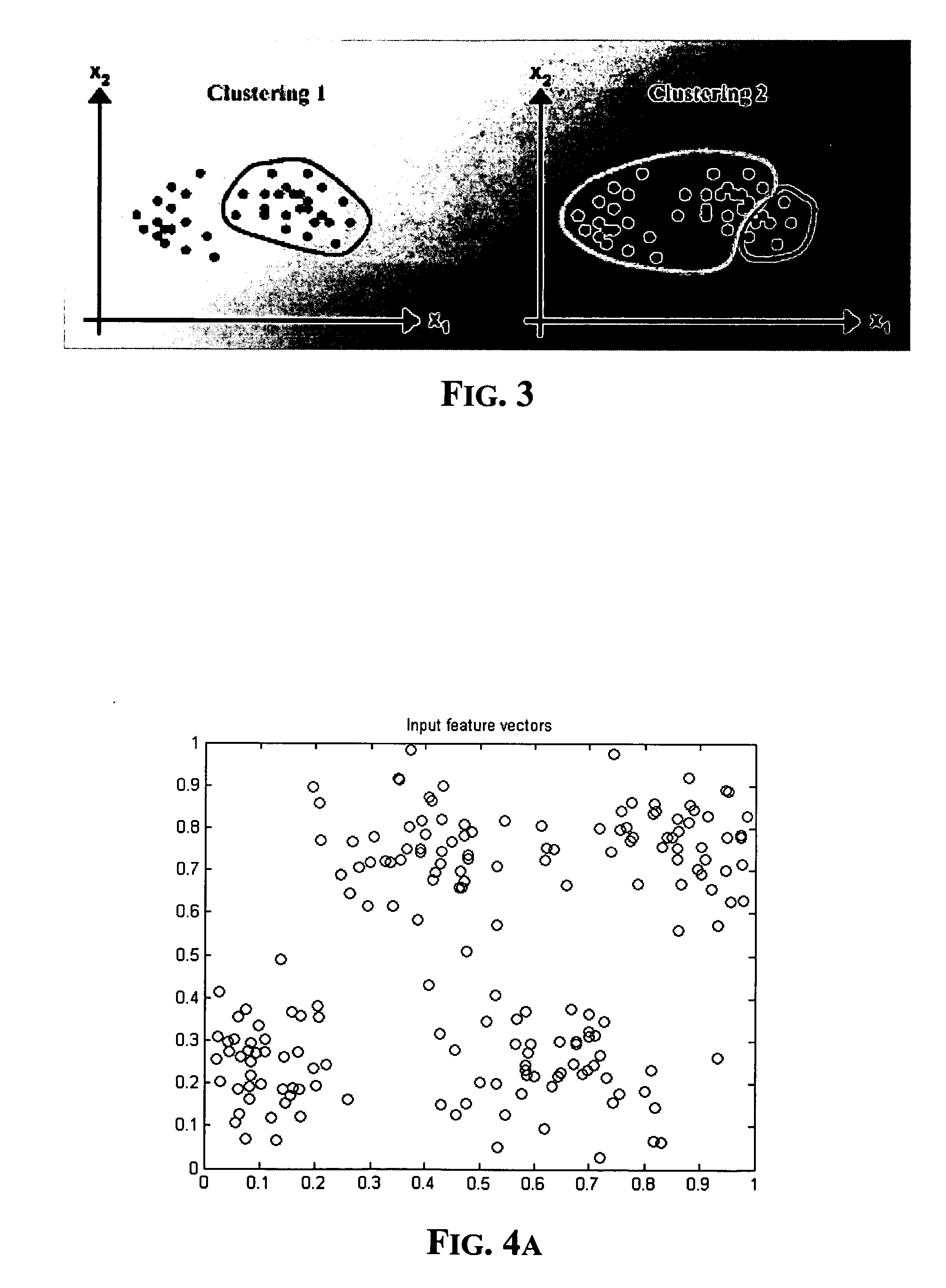Method and a relative device for diagnosing misfire or partial combustion conditions in an internal combustion engine
- Summary
- Abstract
- Description
- Claims
- Application Information
AI Technical Summary
Benefits of technology
Problems solved by technology
Method used
Image
Examples
Embodiment Construction
[0033] In presence of misfires, it is possible to diagnose the existence of a misfire condition from analyzing the pressure cycle in the combustion chamber, as shown in FIG. 9. Indeed, the pressure cycle in this situation is similar to that when the engine is “dragged”, that is when the internal combustion engine is moved by an electrical motor. In such a pressure cycle, the ratio between the measured pressures at symmetrical angles in respect to the PMS is always smaller than one.
[0034] A way of diagnosing a misfire condition by monitoring the pressure cycle consists in detecting the condition expressed by the following inequality: P(θ)P(-θ)<1
wherein P is the pressure in the combustion chamber and θ is the crank angle in respect to the position at which the TDC (Top Dead Center) normally occurs. The above inequality is not verified in case of a normal or partial combustion.
[0035] In case of a partial combustion, the pressure cycle, a sample of which is depicted in FIG. 8, ...
PUM
 Login to View More
Login to View More Abstract
Description
Claims
Application Information
 Login to View More
Login to View More - R&D
- Intellectual Property
- Life Sciences
- Materials
- Tech Scout
- Unparalleled Data Quality
- Higher Quality Content
- 60% Fewer Hallucinations
Browse by: Latest US Patents, China's latest patents, Technical Efficacy Thesaurus, Application Domain, Technology Topic, Popular Technical Reports.
© 2025 PatSnap. All rights reserved.Legal|Privacy policy|Modern Slavery Act Transparency Statement|Sitemap|About US| Contact US: help@patsnap.com



